



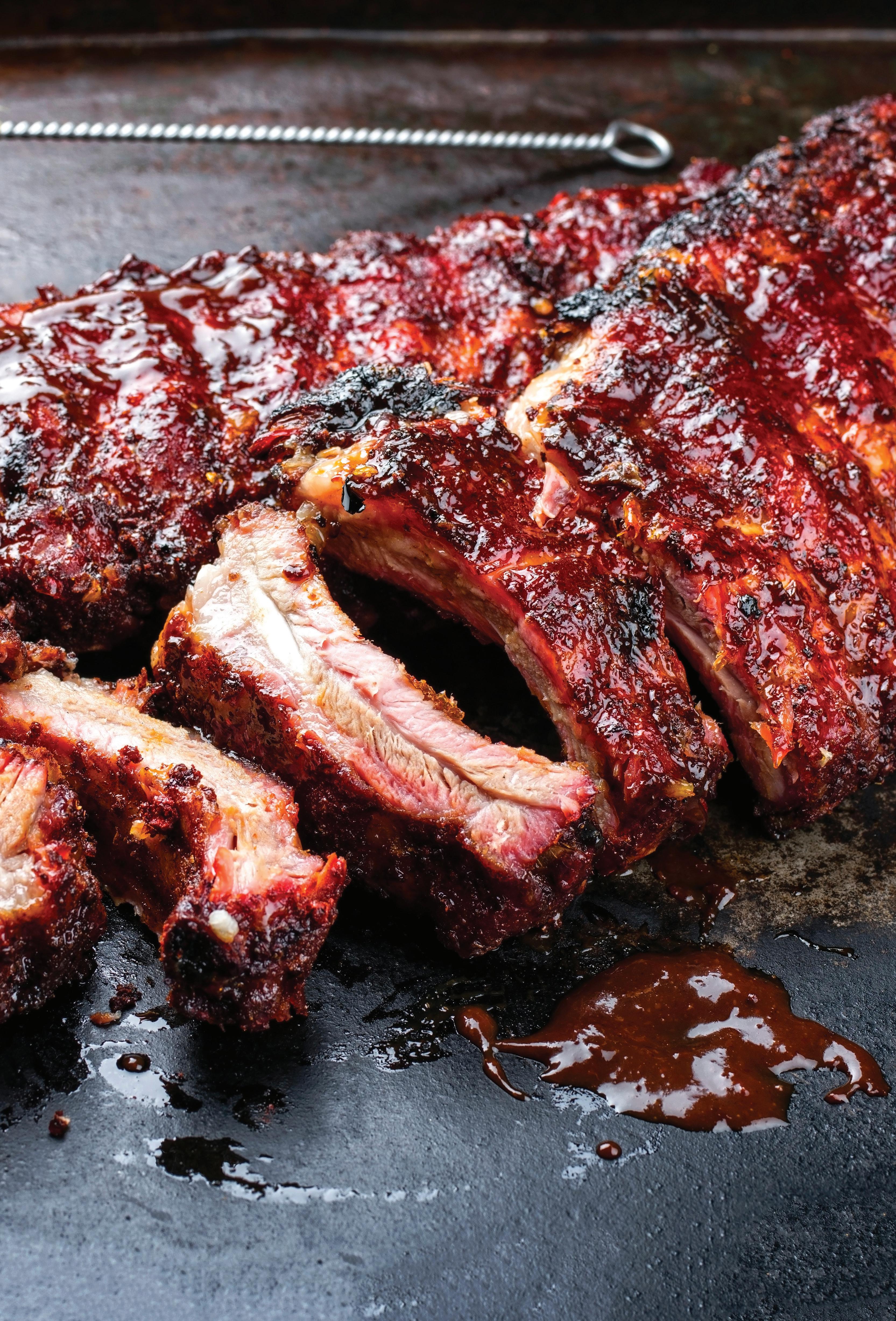

Caitlan Mitchell Editor-in-Chief caitlan@reviewmags.com







Caitlan Mitchell Editor-in-Chief caitlan@reviewmags.com
There is something humble about an egg. Endlessly versatile yet always in demand. For an ingredient often taken for granted, eggs remain a mainstay on menus from elevated brunch spots to bustling bakeries and neighbourhood cafés. Poached, fried, scrambled, they have this quiet ability to do everything and make everything better.
Eggs are not just an ingredient; they're a menu anchor. In cafés across New Zealand, they form the centrepiece of the all-day menu. From the classic eggs benedict to reinvented
takes like wheel scrambles, miso-infused yolks, or fluffy whipped scrambles served over sourdough, the presentation of eggs constantly evolves. Chefs are finding new ways to elevate the egg, turning it into a hero and a canvas. No longer simply "with eggs" on the side, the egg is the dish today.

Though the rising cost of eggs has hit food service operations, eggs still offer a practical yet creative solution. A well-seasoned scramble or perfectly set poach can carry a plate, and a café's reputation as the go-to brunch spot. In this issue, we're
spotlighting the role eggs play across the menus in New Zealand. We asked chefs to tell us about their take on the humble egg, from new wave of egg-focused offerings, from Japanese-style to the popular wheel scramble to unexpected fillings, it's clear that the egg's moment is far from over.
Whether plating the perfect soft scramble, baking a silky custard tart, or serving hundreds of café breakfasts every morning, the egg remains at the centre of the plate and the heart of the kitchen.

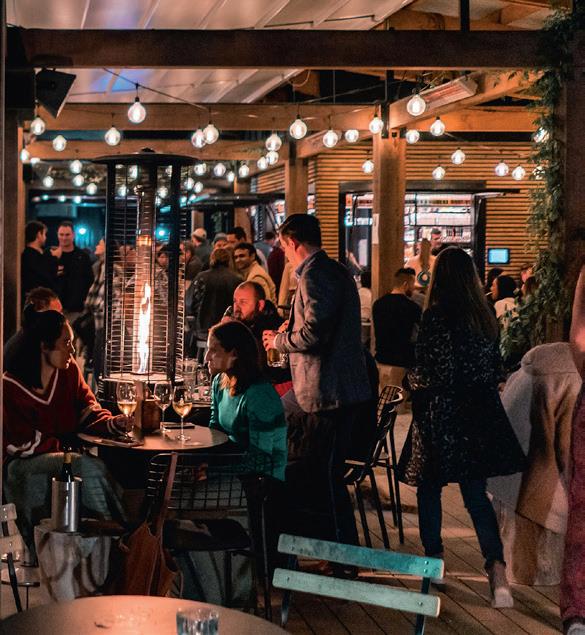









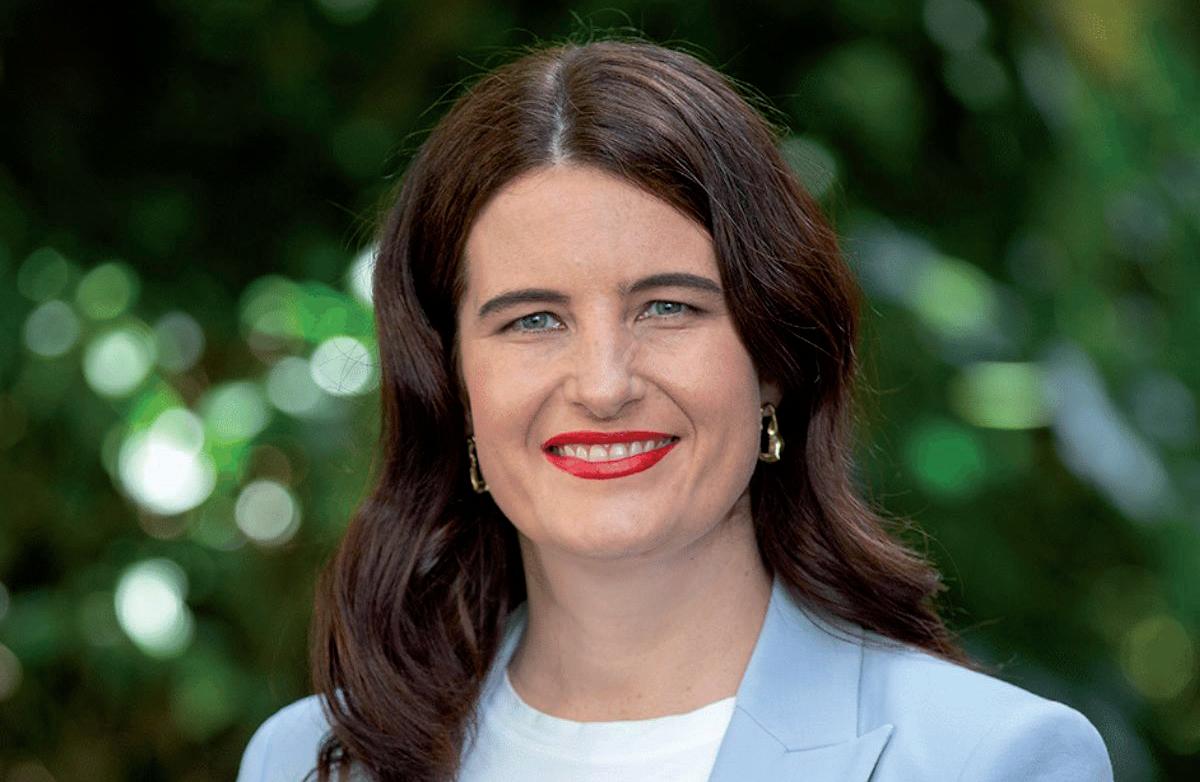
Budget 2025, described by Finance Minister Nicola Willis as a "no BS" budget, sets a clear tone for the National Government’s economic direction.
With an emphasis on growth, restraint, and restoring trust in public services, the budget walks a fine line between boosting productivity and managing the realities of a sluggish economy.
The Government has signalled its intent to rein in spending, announcing the smallest operating allowance in a decade at NZD 1.3 billion per year. Despite slower-than-expected economic growth, the plan is to return to surplus by 2028 to 2029. A new tax deduction for businesses allows 20 percent of the value of new assets to be written off, in a bid to lift investment and output. Read more online

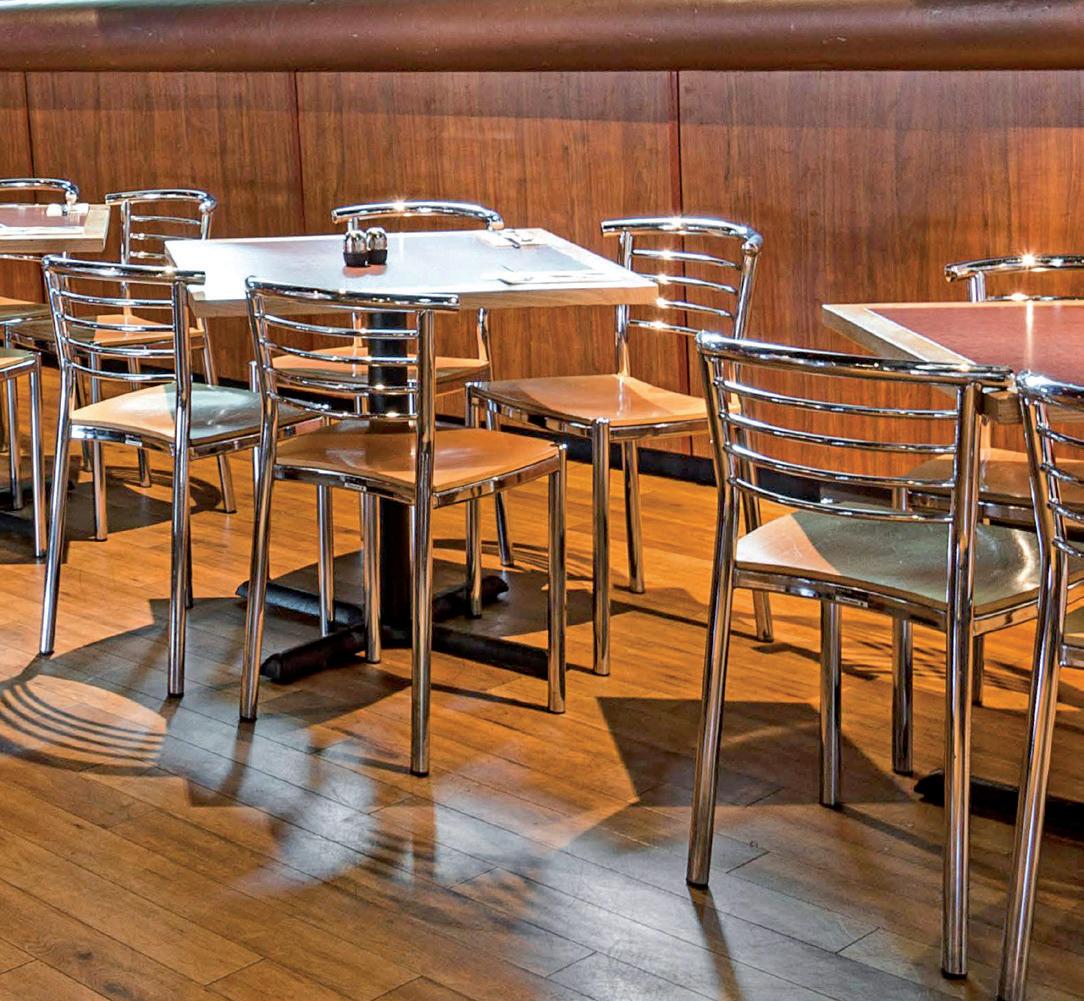
Thistle Inn, Wellington, won a key title at this year's Estrella Damm Top 50 New Zealand Gastropub Awards for the second year in a row.
Presented by Hospitality New Zealand, this year’s Estrella Damm Top 50 New Zealand Gastropub Awards took place in Auckland on 26th March, at Fantail & Turtle. One of the big winners of the night was Wellington pub Thistle Inn, which took out the prize of Best in the Lower North Island for the second year in a row, along with Best Paired Meal. Both pubs have a variety of reasons for shining the way they do. Read more online



It’s simple. Great food starts with strong local connections. McCain has been supporting Kiwi communities for over 40 years, from the farmers who grow top-quality potatoes to the cafés, restaurants, and takeaway spots that serve them.
McCain fries start with the best-quality potatoes. Here in New Zealand, they’re grown by a group of over 12 local farmers who understand how to get the most from the land. From there, each fry is cut to the right length, with the right potato solids for a higher yield, and that signature golden colour and crisp texture.
But great fries don’t grow in isolation. Strong communities make great food possible, which is why we give back wherever we can.
Whether it’s raising money to help refill freezers and keep families fed during cyclone recovery or partnering with local charities and initiatives, we’re committed to supporting the people who support us.
Sustainability matters too. Because you can’t grow great produce without looking after the land. That’s why we’ve introduced a fourpart Sustainability Strategy, helping local businesses to keep serving up delicious food for years to come.
With McCain Foodservice Solutions, businesses can be confident they’re getting quality products, from one local to another.
mccainfoodservice.co.nz/grownlocallovedlocal





South Australia has cemented its position as the champion of Australian wine exports following new data.
South Australia exported AUD 855 million of wine to China in the year to March 2025, a 200-fold increase on the previous year, and 86 percent of Australia’s total of AUD 987 million.
The hard work by the Malinauskas Government to rebuild industry through diversification is paying off, along with the efforts of the Albanese Government to repair our trading relationships with China and beyond.
Read more online
Popular Ponsonby restaurant KOL has new owners, as acclaimed restaurateurs Sid and Chand Sahrawat pass the torch.
One of Ponsonby’s best-known dining spots, KOL, is entering an exciting next chapter with new permanent owners and the backing and mentorship of two of New Zealand’s most respected restaurateurs.
After a series of serendipitous events, hospitality couple Sapan and Ruchi Parikh, already behind two successful North Shore restaurants, will take the reins from founders Sid and Chand Sahrawat on 21 May.
The pair will continue KOL’s signature style of refined flamefired Indian fare while also adding their own specialties to the menu. Exciting times for food-loving Aucklanders, especially as the Parikhs are well-frequented by their own community and often the preferred caterers when internationally-renowned Indian celebrities perform in Auckland’s Spark Arena.
Read more online
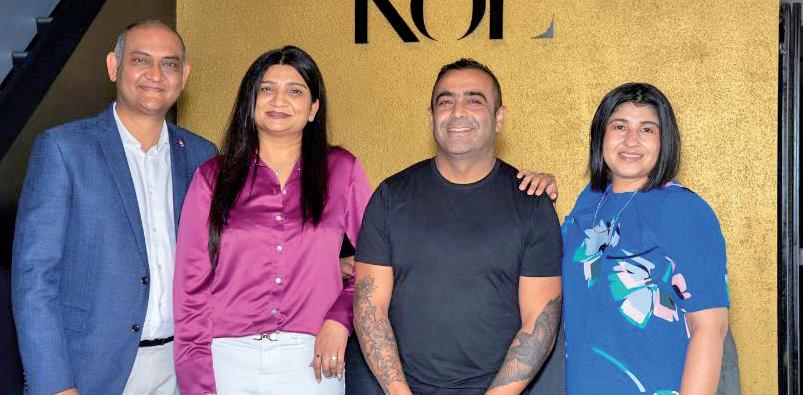


Menumaster delivers speed, efficiency, strength, and durability – which is why it is the microwave oven of choice for fast food chains, service stations, supermarkets, convenience stores, cafés and restaurants. Comprising a complete range of commercial microwave and accelerated microwave, convection, infra-red ovens designed to meet the needs of the most demanding hot food serving environments.
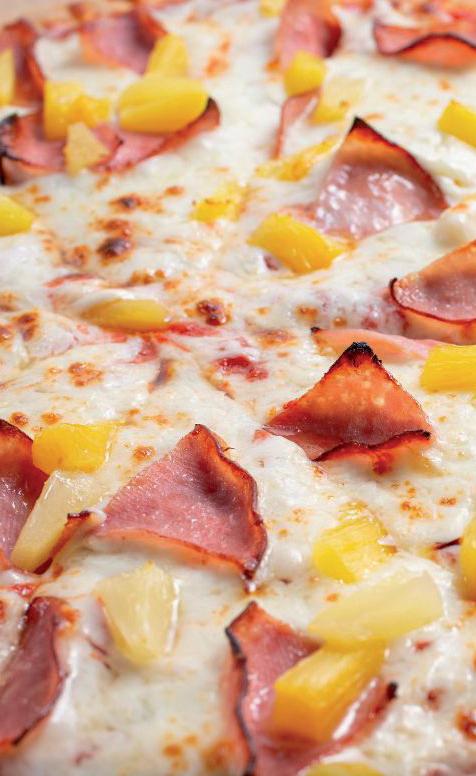
As the dust settles on the Australian election, voters have also made their choice on whether pineapple belongs on pizza.
Pineapple lovers have officially declared a win after Australia voted to determine whether the tropical fruit belongs on pizza.
In a crazy coincidence, during the week of the Federal Election, Domino’s, Read more online

Humble Firefly brings the magic of candlelight in a sustainable way to your table, bar, or restaurant.
In addition to its attractive design, the Firefly is safe, durable and easy to use. The rechargeable battery lasts up to 140 hours. This way you can enjoy the beautiful ambient light on the table or elsewhere in your interior for many evenings before recharging.
Read more online
The Restaurant & Catering Association has highlighted the importance of surcharges for small businesses in hospitality.
The Restaurant & Catering Association (R&CA) said it strongly supported the ability of businesses to use of surcharges in cafés, restaurants, and catering businesses, particularly on weekends and public holidays.
John Hart OAM, National President of the Association, said today that surcharges are a necessary measure to

ensure that businesses can continue operating sustainably on days when wage costs are significantly higher. Read more online





For the perfectly poured cocktail, beer or soft drink, look no further than Fountain Drinks’ latest innovation, Bag-in-Box Beer and Cocktails.

GARY ROBERTSON Founder & Owner, Fountain Drinks
With lower costs, less wastage and a smaller footprint behind the bar, businesses can be assured of serving the best quality beverages every time.
New Zealand company Fountain Drinks has the answer with its latest innovation: Bag-in-Box Beer and Cocktails.
Since it was launched in New Zealand back in 1997, Fountain Drinks has supplied Bag-in-Box post-mix syrups for non-alcoholic soft drinks across the country. Businesses have leased its professionally installed dispensing systems, which are able to convert Fountain Drinks’ syrup concentrates into bubbling, fresh soft drinks via a bar gun.
Fountain Drinks founder and owner, Gary Robertson said the company’s
28 YEARS OF ENVISIONING


mantra has been a nonbranded product that tastes the same and costs less, and that its post-mix system has helped businesses to eliminate waste, ending the on-going issue of half-opened bottles that go flat, and preventing more than a million plastic bottles from ending up in landfills every year.
“We are an independent New Zealand company, without ties to international products that leave you without freedom of choice,” said Robertson.
Having mastered soft drinks, Robertson has now directed his focus to beer and cocktails. New technology used through a special infuser can add CO2, nitrogen or a combination of both to a drink as it is dispensed.
On-demand cocktails and beers with perfect carbonation can now be served from an easily recyclable Bag-in-Box. Guaranteed of high-quality every time from the special new infuser supplied with the Fountain Drinks Dispensing System, the boutique-style beers are brewed on-site by Fountain Drinks in order to ensure the highest standard and are available in a range of styles, including Pilsner, Lager, IPA, and a LowCarb brew as well.
For cocktails, businesses can select from a classic range including Espresso Martinis, Mojitos, Margaritas and Pina Coladas. The Bag-in-Box products can be stored for up to six months at ambient temperature or in a cool room.
The new infuser is able to carbonate drinks to the ideal level as they are poured. Robertson said that the new system will be able to eliminate all uneven beer pours caused by keg temperatures that fluctuate.
“It sits just below the tap and infuses the beverage with either CO2,


IT SITS JUST BELOW THE TAP AND INFUSES THE BEVERAGE WITH EITHER CO2, NITROGEN, OR A COMBINATION OF BOTH AS IT DISPENSES. THIS INFUSION CAN BE USED WITH ANY PRODUCT: COCKTAILS, WATER, PRE-MIX SOFT DRINKS, AND BEER.
nitrogen, or a combination of both as it dispenses,” he said.
“This infusion can be used with any product: cocktails, water, pre-mix soft drinks, and beer.
Bag-in-Box beer can be stored at room temperature, and can be up to 20 metres away from beer taps. The system can be attached to multiple
Bag-in-Box products and is able to switch when bags are emptied without the operator having to do so. It also stops any risk of product flow gaps to the tap.
Through a pump, the infuser is able to draw the beer from the Bag-in-Box to a dual-use ice bank and post-mix chiller. Located below the tap, this will chill the
beer to 3°C as it passes through the re-carbonating infuser, adjusting the extract amount of CO2 or nitrogen into the product to insure the perfect beer is served.
Fountain Drinks and the new Bag-inBox Beer and Cocktails will be at the Fine Food Show in Auckland from 29 June to 1 July.









For savvy business owners who believe every dollar should work harder, RewardPay is quietly becoming one of the smartest financial tools available in New Zealand.
This innovative platform is helping thousands of companies transform routine business expenses into significant reward point earnings while supporting smarter cash flow management. It's a compelling proposition that many businesses are only beginning to explore.
RewardPay allows businesses to pay Inland Revenue (IRD), ACC, landlords, suppliers, and contractors using an American Express credit card. While these recipients often only accept bank transfers or Visa/Mastercard credit cards, RewardPay acts as an intermediary, processing the American Express payment and forwarding the funds by direct deposit. For the recipient, the transaction looks like any standard bank transfer. For the
business, it unlocks a new level of value from payments that would otherwise yield no return.
This is particularly attractive to business owners who carry an American Express card and are looking to accumulate Membership Rewards points. For example, a company paying $300,000 annually in PAYE and GST through RewardPay would pay around $5,010 in service fees at the standard IRD/ACC rate of 1.67 percent. That spend would generate approximately 600,000 American Express Membership Rewards points. Depending on how those points are redeemed, that could be enough for a return business class ticket from Auckland to Europe with some of the world's top airlines, a perk valued at $10,000 or more.

The economics become even more compelling when considering the service's post-tax cost. For companies paying 28 percent tax on profits, the effective cost of RewardPay's 1.67 percent IRD/ACC fee drops to just 1.20 percent. For PAYE taxpayers in the 39 percent bracket, the after-tax cost falls to just over one percent. That changes the conversation from "Is this worth it?" to "Why haven't we been doing this all along?"
And now, RewardPay is adding even more value. This month, Airpoints joins the platform, allowing business owners to earn Airpoints Dollars with every RewardPay payment and American Express points. Users can choose to stack their rewards, converting everyday business expenses into even greater travel opportunities.
You can now select how many Airpoints Dollars you want to earn per transaction:
• 1 Airpoints Dollar per $100 spend (1.15 percent fee + GST)
• 1 Airpoints Dollar per $200 spend (0.6 percent fee + GST)
This flexible option lets you tailor your reward strategy based on spend and value, making it even easier to turn tax bills, supplier payments, and contractor invoices into flights, upgrades, or retail rewards. Whether aiming for your next overseas conference or a well-earned break, RewardPay offers two ways to get there faster.
The appeal extends well beyond travel perks for many businesses, especially small and medium-sized ones. RewardPay allows users to take
advantage of the interest-free days on their Amex cards, often up to 55 days, giving them additional breathing room in managing cash flow. It's a flexible, low-friction option that doesn't involve credit checks, contracts, or setup fees.
That ease of use is another reason RewardPay is gaining traction among business owners. Suppliers don't need to register or even be aware of the platform, and the process is completed entirely within the RewardPay dashboard. Payments made by 5pm on a business day are typically processed the next day and land in the recipient's bank account shortly thereafter. It's fast, simple, and secure.
This service is especially well suited to businesses with steady revenue, solid financial controls, and a desire to extract more value from operational spending. If your business can repay its credit card balance on time and is already using American Express, the rewards potential is significant. If you travel regularly or want to offer highvalue travel perks to your team or directors, the savings in airfare alone could more than justify the service fees.
Of course, RewardPay isn't a onesize-fits-all solution. Businesses that carry card balances month to month or have trouble managing credit card obligations should think carefully about using a platform like this. The interest charges on unpaid balances could quickly outweigh the benefits of points and cash flow gains. But for financially disciplined operators, RewardPay is not just useful, it's a strategic asset.
In a competitive environment where margins are tight and efficiencies are essential, RewardPay gives business owners an elegant way to gain more from every dollar spent. It's less a workaround and more a clever financial system, hidden in plain sight, that rewards those who understand how to leverage it.
If you've ever looked at your tax bill or supplier payments and thought, "Surely there's a smarter way to do this," RewardPay might just be the answer.
www.rewardpay.co.nz





Gilmours has opened its latest Cash ‘n Carry store in Hawke’s Bay, the company’s first new site in eight years.

While the new store has been open for a month and was Gilmours distribution only site for 18 months, it will officially open on its doors to the community on Wednesday the 28th of May.
The store was previously a distribution-only site is under the stewardship of Peter Blackwell (previously Owner/Operator of Gilmours Central). The experienced Gilmours team has overseen the strategic expansion that has enhanced its ability to serve the wider Hawke’s Bay region. Increased delivery capabilities and a broader product range have also reaffirmed Gilmours’ commitment to the local community and businesses.
Ollie Newton, General Manager of Gilmours Hawke’s Bay, said the new store has been in development for over 12 months.
“After a few unexpected additions needed to complete the fit out, we are excited to open our doors and welcome in the Hawke’s Bay foodservice community. The Cash ‘n Carry is a unique offering to our customers, and we are confident it will be well received,” said Newton.
Customers can expect to find a comprehensive selection of grocery, liquor, chilled, frozen and butchery products in the new Napier location. This will cater to the diverse needs of hospitality professionals, retailers and local businesses. A streamlined shopping experience, supported by Gilmours’ advanced Warehouse Management System (EWM) will ensure real-time stock visibility and efficient order fulfilment.
Gilmours said that as a New Zealandowned and operated business, it has taken pride in being a trusted foodservice provider nationwide. The company has emphasised building integral, lasting relationships with industry professionals across various sectors, as well as important community partnerships, and has offered personalised services that have Continued on page 14.





IN ADDITION, WE PLAN ON HOLDING REGULAR MARKET DAYS, WHERE VENDORS (INCLUDING LOCAL VENDORS) WILL HAVE THE CHANCE TO SHOWCASE THEIR PRODUCTS TO OUR CUSTOMERS.
fostered a supportive environment for both customers and staff.
“We will be actively looking at how we can showcase Hawke’s Bay-grown and produced food and beverages. In addition, we plan on holding regular market days, where vendors (including local vendors) will have the chance to showcase their products to our customers. This will provide an opportunity for those passionate about the Hawke’s Bay food service industry to connect and also experience Gilmours unique Cash ‘n Carry offering.”
The opening of the Napier store has also created new employment opportunities in the region. Gilmours has encouraged innovation and has valued high-performing individuals throughout its team. This has also provided avenues for personal and professional growth.
Newton added that Gilmours was committed to its vision of being Hawke’s Bay’s preferred Foodservice Partner.
“We want to continue to build on existing relationships and establish new relationships with customers in the Hawke’s Bay region. We are a customer-focused business and believe in partnering with our customers to help them achieve their goals,” he said.
“The development of the new site and establishment of the Cash ‘n Carry will mean we can offer a wider range of products to our customers, at low prices and with a greater certainty of supply. This provides us with a strong foundation to achieve our vision.”
The Hawke’s Bay store is located at 39 Edmundson Street, Napier, and is open Monday through Sunday. For more information or to explore the full range of products and services, visit the Gilmours Hawke’s Bay location page



From
There is nothing simple about scrambled eggs these days. Once the domain of rushed breakfasts and homecooked comfort, scrambled eggs are now holding their own on café and restaurant menus, with chefs rethinking technique, texture, and flavour.
One of the newest methods making its way onto plates is wheel or rosestyle scrambled eggs. This gentle, circular stirring technique creates long, delicate curds with a silky texture and soft, ribbon-like folds. It is a simple approach that requires no additions like cream or milk, relying instead on the slow, controlled cooking of the eggs themselves. When done well, the result is a refined, elegant presentation. However, this method can easily cross the line from silky to rubbery if the eggs are left on the heat too long, resulting in a texture more in keeping with a retread tyre than the soft scramble diners are expecting.
The traditional fluffy scramble remains a favourite, with chefs using consistent stirring and a little butter or cream to achieve those light, airy curds that customers know and love. This style offers familiarity and comfort while still allowing room for finesse.
Chefs are also rediscovering how
much the addition of moisture and fat can transform the final result. Whisking in a tablespoon of milk, cream, or water per egg introduces extra steam as the eggs cook, helping to puff them up and keep the texture soft and moist. Many scrambled egg recipes call for heavy cream, half-and-half, or whole milk to enhance flavour and tenderness. The fat in dairy interrupts the proteins in the eggs, softening the texture, while the water content turns to steam, lifting the curds to create a fluffier finish.
Finishing touches make all the difference. Folding through ricotta, a spoonful of crème fraîche, or an extra knob of butter at the final stage brings a luxurious softness and gentle shine to the dish. These simple additions elevate scrambled eggs from everyday to exceptional.
Whether plated soft and silky, light and fluffy, or luxuriously creamy, scrambled eggs are proving that even the most familiar dishes can surprise and delight when given a little care and attention.
Elevating the scramble, is one more way chefs are bringing care and attention back to the breakfast menu, proving that it often takes more skill to perfect the simple dishes than it does to impress with the complex.




As every customer’s preferences are different, versatile dishes such as scrambled eggs can require chefs to create a simple offering that can be elevated according to demand.
For Ethan Carroll, Head Chef at The Botanist in Wellington, eggs are one of the most popular orders for customers of all ages. Being a vegan and vegetarian cafe, eggs are one of the few animal products Carroll uses on the menu.
He said the kitchen would easily go through 400 to 600 eggs per week, and well over 100 per day on weekend services.
In order to cater to The Botanist’s predominantly vegan crowd, elevating scrambled eggs has meant reinventing and reimagining what a scrambled egg could be.
Carroll likes to keep his scrambled eggs simple, using no milk or cream, just margarine into a pan on high. He uses a scramble mix combined with salt and pepper, then mixed with a spatula until little to no liquid remains. He said for most restaurants, this can be easily elevated by adding a garnish as simple as chives and creme fraiche.
“We’ve settled on a fantastic scrambled tofu recipe that mirrors the taste, texture and even smell of scrambled eggs by using ingredients such as black salt (smell), turmeric (colour) and nutritional yeast (taste),” he said.
“Working at a vegan restaurant, we are always questioning why we use animal products and if there is a way we can push more customers.”
Dunedin’s Catalyst Kitchen said that 75 percent of its daily orders would be eggbased dishes. Its scrambled eggs are
prepared by lightly whisking, cooking in an oiled pan, and then stirred until the desired texture is developed.
The Botanist uses locally sourced herbs and microgreens as a garnish, whereas Catalyst Kitchen serves scrambled eggs on a piece of housemade toasted bread, some cheese, chives, and a good dose of salt and cracked pepper. Depending on the dish, Catalyst Kitchen will also serve with a dressing of hollandaise sauce or some simple greens.
Carroll said that egg personalisation is part and parcel of having three ways on the menu.
“Sometimes getting 15 plates out at the same time does depend on all your eggs coming out just right, and at the same time. The time sensitivity of getting egg dishes out to customers before a temperature drop means that customisations can hinder this.”
He added that it can be difficult, as guests also have high expectations for a dish they’ve personally made themselves many times over.
Catalyst Kitchen said that personalisation can be quite disrupting to the flow, but it will often combat this by limiting the changes or add ons that a customer can make.
There has also been a trend towards customers wanting to know where their eggs are sourced. Sustainability has been a main focus for Carroll, who said that suppliers have also leaned towards regenerative farming to cater to this market.


SOMETIMES GETTING 15 PLATES OUT AT THE SAME TIME DOES DEPEND ON ALL YOUR EGGS COMING OUT JUST RIGHT, AND AT THE SAME TIME.
ALTHOUGH ARE ON DISHES TO THEIR THERE IS FOR KITCHENS EXTRA SATISFACTION.

ALTHOUGH CUSTOMERS ON THE HUNT FOR DISHES THAT ARE CATERED THEIR PREFERENCES, IS A GROWING TREND KITCHENS TO GO THE MILE TO MEET THEIR SATISFACTION.

Personalisation can not only be important to customers but also an integral factor of an eatery’s appeal and competitive edge. However, the delay and inconvenience of customised orders can potentially delay kitchen operations and cause unnecessary stress for chefs.
While scrambled eggs are a staple on any cafe’s menu, customer demand for personalisation has elevated the humble breakfast dish to become an upmarket option. Although customers are on the hunt for dishes that are catered to their preferences, there is a growing trend for kitchens to go the extra mile to meet their satisfaction.
Scott Kennedy from Dulcie, a popular hotspot in Devonport, Auckland, said his menu had a refined and sophisticated approach while still being familiar to customers.
“We want to keep things as local and seasonal as possible as well. Customers will find scrambled eggs with Canterbury truffles, but once the season is over, that dish will be off the menu. We have dishes that sound familiar like curried eggs and sausage and egg muffin, but we try to execute them differently, such as the curried eggs come with a beautiful saagwala sauce and fried curry leaves,” said Kennedy.
Common customer requests impact the recipe, such as using milk instead of water or cooking with butter instead of oil. Although customers can be quick to claim they can taste the difference, it is important to avoid offering too many opportunities for customers to make simple but timely changes to their order.
The method of cooking a simple dish like scrambled eggs varies in each establishment. The focus of serving something that takes less time to cook but more complicated to customise has become a frequent sight. Scrambled eggs are largely favoured when light and fluffy, rather than served flat like an omelette. Instead of taking extra time in the cooking phase, many kitchens now offer add-ons as a way to make their dishes stand out.
Whether it’s by adding smoked salmon,
a side salad or an additional serving of sauce, offering customers the option to personalise their order in this way won’t cause significant disruptions. In some cases, eateries have even introduced a limit on how many add-ons they allow. Including too many add-on options on the menu can significantly increase inventory costs, especially with fresh or perishable ingredients. This will require chefs to carefully consider the shelf life of ingredients in order to minimise waste. More add-ons will mean slower cooking times. It will also mean kitchen teams will need to be trained on how to handle each combination, adding to the overall complexity of the kitchen workflow.
Too many options can overwhelm customers. It can lead to longer ordering times and potentially reduce sales. Introducing add-on options will need to be carefully considered by eateries and clearly presented in a concise way to avoid customer confusion. It will also mean that waitstaff must be wellinformed about sudden shortages in the kitchen, potential cost increases and any allergens that customers may ask about. Making the add-on menu too complicated can distract from the dish at hand and make it too confusing for customers to choose from.
Instead, showcasing a refined menu could have wider benefits. An example of this could be the choice of bread. Stating that scrambled eggs are served on white toast, but freshly baked sourdough is available for an extra cost, is a simple decision for customers to make. The same approach could be applied to customers wanting to add a side salad or extra bacon.
By serving customers quality rather than quantity, establishments are able to garner a stronger reputation and provide a better customer experience.




It is no secret that baked goods are an integral part of cafe operations. With countless different products for businesses to offer, there will always be steady customer demand for baked goods.

BRINGING NEW ITEMS OUT MAKES CUSTOMERS KEEP SURPRISED WHEN THEY COME INTO THE BAKERY.

For some customers, it’s the sweet treats that bring them in. Mariana Ladislao from Medialunas Aurora Bakery in Wellington said that customers love pastries with custard and different fruits such as black dorris plums, apricots or apples.
“We specialise in Argentinian pastries. They are made with a butter brioche dough like, so they are much fluffier and sweeter than your French croissants and viennoiserie,” said Ladislao.
Fellow Wellington hotspot Smith the Grocer Cafe has found that savoury options are able to attract the most customers. Owner Kirsten Saunders said the most popular baked item was by far the classic cheese scone.
“Customers love it toasted with plenty of butter, and we sell around 60 of them a day. Our Date & Apple Scones and our irresistibly soft Cinnamon Brioche are close behind,” said Saunders.
Par-baked products have long been a convenient way for businesses to offer customers a convenient and high-quality product, with a reduced cooking time to maximise kitchen efficiency.
Every business has a different interpretation of par-baked offerings. For Ladislao, par-baked empanadas have been a hit with customers.
“These are similar to savoury pies. It is good for us to keep them partially baked since the filling only needs warming up to be served, and the pastry needs to get golden brown. If they were fully cooked, their pastry would get a bit dry and possibly too dark,” she said.
Baked goods have adapted to the growing trend for dietary inclusivity. Saunders said that there has been a noticeable growing interest in dairy-free and vegan options, and that gluten-free choices have continued to be in high demand. She said these trends have reflected a broader shift towards more health-concious eating habits, and the cafe was excited to support it.
“That said, sourcing high-quality dairyfree and gluten-free ingredients remains a challenge. These products are often more expensive and don’t always behave like traditional ingredients when it comes
to baking. As a result, we’re limited in how widely we can use them without compromising on quality or affordability,” she said.
An example of Smith the Grocer Cafe’s awareness of dietary inclusivity has been the success of its famous in-house ginger crunch. Saunders described this as a gluten-free slice that has earned a loyal following for its balance of sweetness and spice. She said the cafe was very proud of Smith’s Famous Ginger Slice, as not only was it a delicious offering, but a great example of how gluten-free can be just as satisfying as the classics.
Saunders added that it would be good to see more supplier support in this space, such as an affordable and reliable gluten-free scone mix.
“This would make a big difference in helping us expand our offerings without passing extra costs on to our customers. It’s a space full of potential, and we’re hopeful that as demand grows, accessibility and innovation from suppliers will follow.”
Just as the growth of dietary awareness, innovation has continued to impact the baking sector of food service. Ladislao said that baking innovation has many benefits for businesses to compete and maintain a loyal customer base.
“Innovation is super important to keep customers engaged and motivated. Bringing new items out makes customers keep surprised when they come into the bakery,” she said.
Saunders said her cafe has always been on the lookout for ways to improve and adapts, especially as more customers request dairy-free options. However, she said a consequence of this is that the cabinet is already full of different offerings, and that introducing something new would mean saying goodbye to a longstanding favourite.
“We’ve learned just how attached people are to their go-to slice or cake, removing an item can lead to real disappointment. So, innovation for us is a careful balancing act: we’re constantly exploring how to introduce fresh, thoughtful offerings without losing the classics our community loves.”





Located in the heart of Wellington, Le Ciel Bakery has garnered a reputation for its exquisite baked goods. As a French-inspired bakery, its menu has been dedicated to blending classic techniques with fresh Kiwi flavours, be it pastries or sweet treats. Le Ciel has prided itself on handmaking all its offerings.
For Baker Shuchi Bhardwaj, baking has always been a lifelong passion.
She said that, by far, croissants have been the star of the show at Le Ciel Bakery. Whether it’s almond, classic or seasonal flavours like pistachio or raspberry, they always fly off the shelf. She said customers also gravitate towards the bakery’s refined sugar-free cashew cheesecakes and butterfly, flaky pastries.
Bhardwaj said customers enjoy something comforting and indulgent, which is why a well-made croissant will never go out of style.
Le Ciel’s signature French-style croissants are made with cultured New

SHUCHI BHARDWAJ
Le Ciel Bakery, Wellington
Zealand butter. Bhardwaj added that the baking stage is treated like an art form.
“We also rotate in specialty items like our Chai-La-Mode (a chai-spiced croissant French toast), Tanzanianinspired pastries, and decadent vegan mini pies. Our menu blends French technique with Kiwi and global influences, it’s cheeky, bold, and refined all at once,” said Bhardwaj.
Regarding par-baked goods, Bhardwaj believed they can be a game changer, especially for operational efficiency and consistency across multiple locations. According to Bhardwaj, they are convenient as they
Continued on page 26.

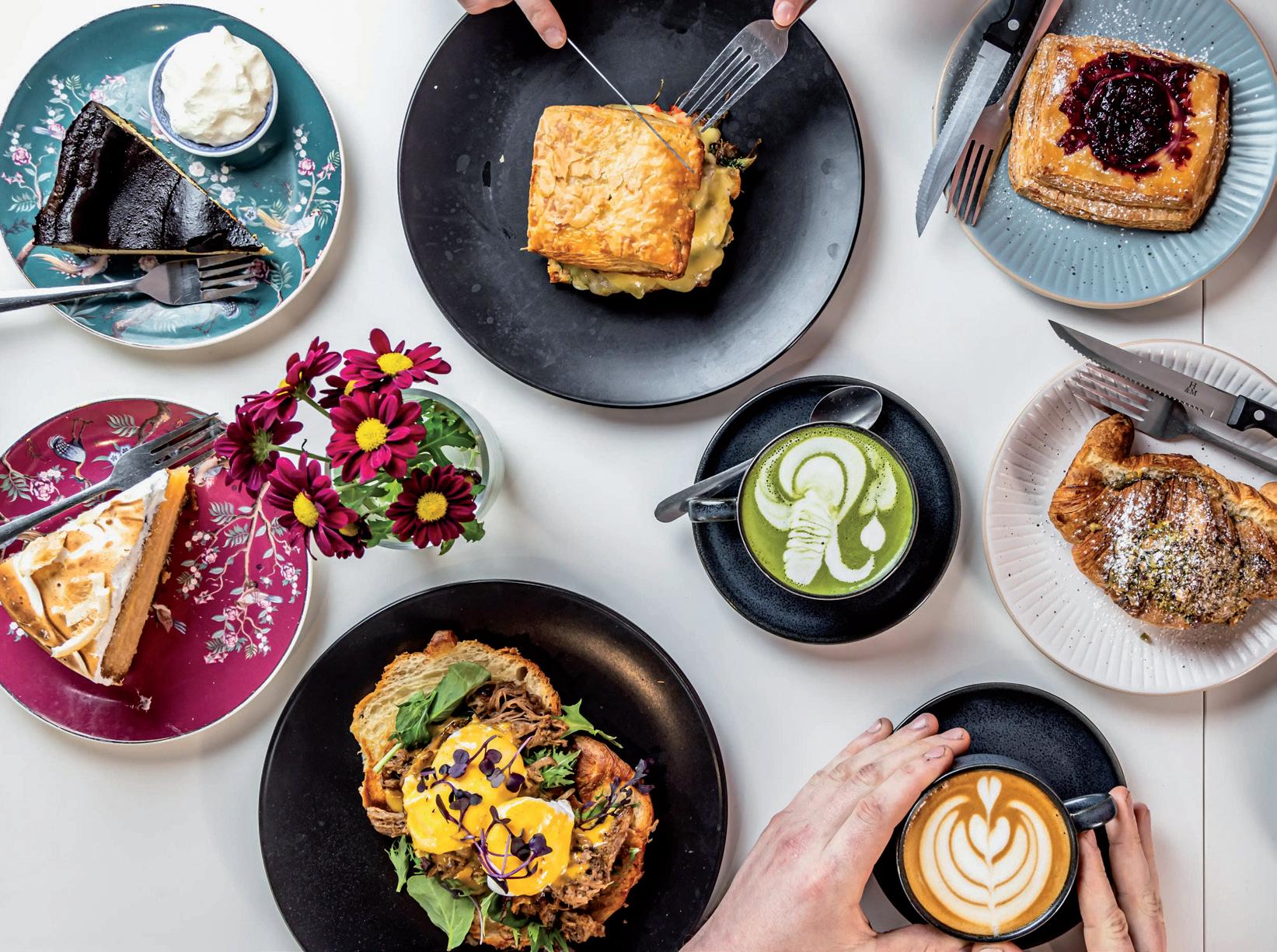


help to reduce waste, save time, and make it possible to offer high-quality bakes throughout the day.
There is also an opportunity for chefs to add their own artistic interpretation on par-baked goods. Bhardwaj said that the base may be consistent, but there was plenty of room for creativity from flavour infusions, toppings and fillings to presentation and plating.
“A good chef will always find ways to leave their signature, even on something par-baked. It’s about elevating the product, not limiting it.”
That said, Bhardwaj still believed in the power of baking fresh on-site every day as much as possible.
“There’s just something so magical

about the smell of croissants coming out of the oven in the morning.”
Over the past few years, Bhardwaj said there has been a noticeable lean towards gluten-free, dairyfree and low-sugar options, without compromising on indulgence. She added that customers at Le Ciel have been drawn to transparency, sustainability and authenticity in storyteller.
She has also witnessed a growing love among customers for fusion and nostalgia-inspired flavours, especially when crafted with a modern, elevated twist.
Bhardwaj said it is essential to continue innovating within the bakery
sector. She said innovation was a tool to keep things exciting for both chefs and customers.
At Le Ciel, innovation has been seen as a dance between tradition and rebellion.
“We respect the classics but love pushing boundaries, whether it’s with flavour, technique, or presentation. Innovation also helps us respond to evolving customer preferences and seasonal ingredients in creative, delicious ways.”








As we head into the colder months of 2025, one thing is clear: New Zealand’s hospitality industry is still doing it tough. Inflation may have stabilised — with annual inflation now within the Reserve Bank’s target range — but for many café, restaurant, and bar owners, the day-to-day pressures haven’t eased. The cost of goods is still high, margins are thin, and customers are watching their wallets more closely than ever.


We’ve come through crisis before — the pandemic taught us just how resilient this industry can be — but this feels different. It’s not a sudden shock; it’s a slow grind. A grind that sees tables empty on a Thursday night, wage bills creeping up, and regulars dropping from weekly to monthly visits. According to Worldline NZ, spending in hospitality dropped 2.7% in 2024. And while sales lifted 5.8% across the sector, most of that was driven by price increases, not growth in customer volume. When your revenue
goes up but your profitability doesn’t, something’s got to give.
And yet, amid all this, some businesses are quietly doing well — and their success offers important lessons for the rest of us.
Take Restaurant Brands New Zealand, for example. The company behind KFC, Pizza Hut, Carl’s Jr. and Taco Bell recently posted a 62.6% lift in net profit. They’ve succeeded by staying relentlessly focused on what they do best: delivering affordable, craveable food at speed and scale. They haven’t reinvented the wheel — they’ve just made sure it spins efficiently. Investment in digital, a focus on operations, and smart menu management have all helped to keep them ahead.
But success isn’t limited to the big players. Across the country, we’re seeing suburban eateries holding their own — and in many cases, outperforming their city centre counterparts. With more people working from home or staying local to reduce costs, neighbourhood venues that offer reliable, well-priced meals in welcoming environments can be recession-proof.
Businesses that have built strong loyalty and a clear identity are also faring better. It might be the family-run Vietnamese place with a loyal following, or the café that knows your coffee order by heart. It’s the places that haven’t tried to be everything to everyone — but instead have doubled down on their niche, looked after their regulars, and delivered a consistent experience, day in and day out.
There’s a thread that runs through all of these success stories: clarity, consistency, and customer connection.
1. Refine your offer – Look at what you do best and amplify it. Cut the menu if needed. Champion your signature dishes. Simplify the experience and make it easy for customers to say yes.
2. Adapt your hours and pricing –Consider shifting opening hours to match demand. Trial early bird specials or set menus that offer strong value without reducing quality. Customers are still going out — they’re just being choosier about when and where.
3. Make loyalty visible and rewarding – Whether it’s a simple coffee stamp card or a digital loyalty program, give your customers a reason to come back. And make them feel noticed when they do.
4. Lean into local – Host events with local entities. Offer specials tied to school holidays, local sports wins, or community fundraisers. The more integrated you are with your neighbourhood, the more insulated you are from economic headwinds.
5. Maximise your quiet nights – Use slower days for things like private hire, collabs with food trucks or pop-ups, staff training, or even testing new dishes. Get creative about how your space can earn.
6. Stay close to your team and customers – Communicate openly, keep morale up, and celebrate the wins, no matter how small. Customers pick up on good energy — and in this climate, great service can be a serious point of difference.
This winter will be a test. It always is. But this year, it’s about more than just surviving a seasonal dip — it’s about holding your ground in an economy where every dollar is hard-earned. The good news is that hospitality has always been about heart, grit, and human connection — and that still matters. There is light ahead. Interest rates are easing, targeted tourism funding is coming into play, and customers are still willing to spend — if they see value. Our job now is to meet the moment: to adapt, to stay close to our customers, and to keep turning up.
Survival is not a small thing. If you’re still standing in 2025, you’re already doing better than you think.





Presented by Hospitality New Zealand, this year’s Estrella Damm Top 50 New Zealand Gastropub Awards took place in Auckland earlier this year at Fantail & Turtle.
IS MASSIVE TO US! THE SOUNDTRACK SERVICE AND THE SEASONING THAT TIES IT ALL TOGETHER.

The Takapuna based eatery was the 2024 Supreme Award winner, known for its bespoke cocktails, local beers, gorgeous meals and great vibes, and this year it was their turn to host.
There’s a lot to be said for 2024 Supreme Award winner Fantail & Turtle, which opened in Auckland’s Takapuna six years ago.
It’s a business guided by core values of manaakitanga, kaitiakitanga, and whanaungatanga. It’s family-owned, fiercely independent, an award-winning bar, eatery and functions venue, but more than that, Fantail & Turtle is a testament to the enduring power of friendship, taking its name from owner Travis Field and his best mate Troy (Turtle).
The duo met during Army Officer training in Waiouru at the young age of 18. They quickly grew a strong bond, sharing many adventures togetherincluding eventually meeting their wives on nights out in Auckland.
“It was an era of the best music and worst fashion, and I think it was our love for life, rather than our dance moves, that won them over,” said Field.
Sadly, in 2005, Troy found out he was dying and passed away in 2006, leaving a wife, twin boys, and a bereft mate.
“The legacy of their friendship, and perhaps a nod to some of their revelry, continues in Fantail & Turtle,” said General Manager James Wakefield.
“What drives us is bringing people together, and the challenge of creating an environment that seeds something that’s felt well after the last round, not only for our manuhiri, but importantly, our team too. Food and drinks might be on the menu, but the product is what you feel when you’re here, and the energy that lingers long after you’ve left.”
Fantail & Turtle considers music a vital element to the experience, they took on a OneMusic license to support the space.
“Music is massive to us! It’s the soundtrack to our service and the seasoning that ties it all together. Music sets the tone for everything, it shifts moods, shapes memories, even influences what people order,” said Wakefield.

And they need to be hot on the tunes, especially with their service times, as Functions and Events Manager Izzy Frankham described, they’re open for allday grazing, and therefore, all-day music.
A thoughtfully curated playlist enhances the dining experience, fuels conversation, and creates an inviting atmosphere.
“Sometimes all it takes is one song to stay on for another round, and before you know it your friends have convinced you to make a night of it - you can worry about picking the car up tomorrow,”
Frankham said.
As for what these stick-around songs are, there’s no one answer.
“It’s eclectic, there’s probably not a single genre we haven’t played at some point,” said Wakefield.
“We give a lot of agency to our team on the day, because if they’re not feeling the vibe, no one will.”
For Fantail & Turtle, the best part of being in the hospitality industry is the ability to create a space for people to build genuine community and connection.
“All of our most memorable moments over the years will have involved music in some way,” said Frankham.
“I can think back to songs our team used to celebrate every big win, or that kept us dancing through each silly season (sorry, December). Even songs that sparked a dance floor when we least expected - it’s never just playing in the background; it’s part of the story.”







ELISE BUTLER
Owner Beverly Patisserie, Hamilton
The upcoming Pastry Chef of the Year competition at Fine Food New Zealand will showcase the best of kiwi culinary talent and craftsmanship. The high level of registered competitors has meant the competition will now be spread across two heats.

SISI LI
Founder Cino Cake Design, Auckland
Elise Butler, owner and operator of Beverly Patisserie in Hamilton, will compete in this year’s competition. She trained at Le Cordon Bleu in Wellington, and in 2024, attended the prestigious Ecole Ducasse culinary school in Lyon, France.
Sisi Li (Cino), founder of Cino Cake Design in Auckland, will also take part. She completed a diploma in Art and Design in China and is currently studying towards a Master’s degree in Applied Management. She has studied with Ben Goh, Captain of the Singapore National Dessert Team, and developed her craft at Lenotre Paris Culinary Institute and at Hangar 78 Culinary Institute in Italy.
Achira Kularatine is the Pastry Chef at Fairlie Bakehouse, and will travel from South Canterbury to compete this year. He has a diploma in Sugar Flower Wedding Cake Structure, and gained a gold medal in pastry art at the Luxembourg Culinary World Cup in 2018. He won Best Pastry Chef of the Year at Emirates Salon Culinaire 2017 in Dubai, and won bronze at New Zealand Pastry Chef of the Year 2024.

ACHIRA KULARATINE
Pastry Chef, Farlie Bakehouse
Many pastry chefs competing at this year’s championships have worked within the hotel space.
Mohamed Noufal is a Demi Pastry Chef at SkyCity Entertainment Group. He has a diploma in Hotel Management, and has worked at the Sheraton Grand Hotel in Bangalore and the Movenpick Hotel and Resort Jumeriah Lake Towers in Dubai. Noufal won silver at New Zealand Pastry Chef of the Year in 2023.
Bishal Dhakal is Senior Chef de
Continued on page 34.

MOHAMED NOUFAL
Demi Pastry Chef, Sky City







Senior Pastry Chef, Sky City


Pastry Chef & Jr Sous Chef, Sky City

Chef de Parti, Takina Wellington
from page 32.
Pastry at SkyCity. He gained a Diploma in Tourism from AUT, as well as Cookery level 4 with Service IQ. Dhakal works at Cassia with acclaimed local chef Sid Sarawat, and has previously worked at Salon de Katmandu.
Jenny Aquino-Dickeson is a Pastry Chef and junior sous Chef at Sky City. She has a Post Graduate Diploma in Applied Business, and a Bachelor of Science in International Hospitality Management. She has worked at the Marriott and Sear in Atlanta, and worked for Chefs Josh Emett and Ben Bayley in seasonal menu creation.
Merlysha Pereira has worked as a full-

Pastry Chef, Jetpark Hotels

Pastry Chef, Mangapapa Hotel
time pastry chef at Jetpark hotels since 2023. Her specialist skills include bread making and cake decorating. Pereira’s previous roles have included working for Marriott Marquis and Ocean View Hotels in Dubai, and as Pastry Chef at Sharjah International Airport in Dubai as well.
Suraj Kolarveettil is currently the Chef de Parti at Takina, Wellington Convention and Exhibition Centre. Kolarveettil studied at the Holy Cross Institute of Management and Technology in India and worked at The Sheraton Grand in Bangalore. He has also worked at the Ossiano Dubai, a one-Michelin-Star establishment, and
Five Palm Jumeirah Dubai. Lovely Gonzaga, Pastry Chef at Mangapapa Hotel in Hawke’s Bay, will also compete. Gonzaga studied at North Shore International Academy, and worked as a Chef at Edmund Hillary Retirement Village, as well as a Baker at New World in Hastings. Chefs have many opportunities open to them, from the growing aged care market, and Michelin Star chefs have worked in retirement villages, to supermarkets with in-house bakeries, and butchers’ shops, which have become very popular and offer great experiences to chefs.

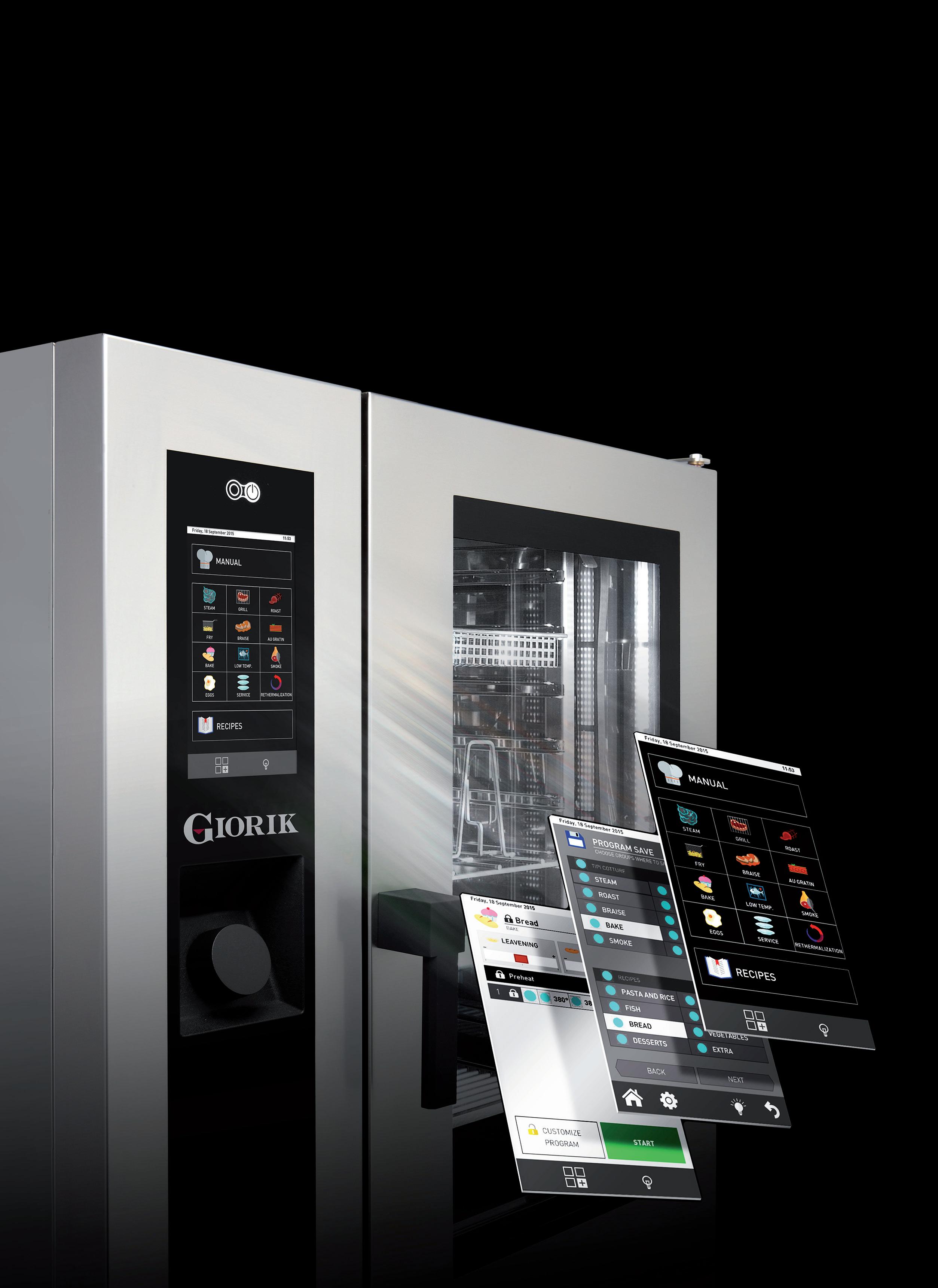
Future innovation in commercial ovens has seen focus on greater automation, sustainability, and connectivity.

Shane Smith, National Product Manager at Stoddart, said advancements in AI and machine learning will lead to ovens that can autonomously adjust cooking parameters based on real-time feedback, reducing the need for manual input and improving consistency.
He said energy efficiency will continue to be a priority, with features like advanced insulation, low-energy steam generation, and smart heat recovery systems becoming standard.
“Connectivity or way of, I see, will expand, allowing for seamless kitchen management, remote diagnostics, and predictive maintenance. Additionally, more compact, multifunctional designs will emerge to meet the needs of smaller, urban kitchens. Sustainability will also drive innovations in water and energy use, making ovens more eco-friendly,” said Smith.
“Overall, the future points toward smarter, greener, and more adaptable cooking solutions for the foodservice industry.”
When choosing an oven for a commercial kitchen, key factors to take into consideration include capacity, functionality, and energy efficiency. The oven must match the kitchen’s volume and menu needs, be it for baking, roasting, or steaming.
Smith said there were often several common mistakes that chefs and restaurants can make. One key error was choosing an oven based solely on price, without considering long-term performance, energy efficiency, or maintenance costs.
Additionally, some buyers ignore ease of cleaning and service access when required, increasing downtime and operational costs after the initial purchase. Not evaluating user interface and training needs was another pitfall; overly complex ovens can slow down staff or require excessive training.
“Skipping energy concerns or sustainability features can lead to higher operational costs. A well-informed decision requires balancing performance, size, efficiency, and usability with the unique needs of the kitchen.”
From a chef’s point of view, there has been a dramatic increase in stackedoven formations, where these efficient solutions are stacked within the same footprint, delivering maximum output and overseeing multiple ovens in a single-form lineup.
Stoddart’s Giorik oven range has a comprehensive suite of commercial cooking solutions. Renowned for its European engineering, the range has combined advanced technology with robust construction to meet diverse
OVERALL, THE FUTURE POINTS TOWARD SMARTER, GREENER, AND MORE ADAPTABLE COOKING SOLUTIONS FOR THE FOODSERVICE INDUSTRY.
culinary needs. The Giorik Steambox Evolution and Kore models are standout options. These units feature patented systems like Symbiotic Steam, which is a hybrid boiler steam generation that reduces energy, and the Meteo System for precise humidity and steam control. With over 120 preset automated programs and the ability to store up to 1,000 custom recipes, these ovens support various cooking methods, including sous vide and smoking. Wi-Fi connectivity enables remote monitoring and service via the Giorik/Stoddart Cloud, which has enhanced operational efficiency. The Giorik oven range covers compact ovens, full-size ovens and sizes from small bench top models right through to large 40-tray versions, as well as numerous stacking options and many more variations.
Smith believed that AI will play a major role in the future of commercial ovens, transforming how professional kitchens operate. He said future ovens will use AI to automatically recognise food types, optimise cooking parameters and adjust time, temperature and humidity in real time.
“This will ensure consistent results, reduce food waste, and improve energy efficiency. AI will also support predictive maintenance, alerting users to potential issues before they cause downtime,” said Smith.
“Combined with cloud connectivity, AI will enable remote monitoring and centralised control across multiple kitchen locations, making operations smarter, faster, and more reliable for busy foodservice environments.”




Innovations in commercial kitchens have revolved around improving the speed of cooking, the safety and comfort of the chefs, and cost to operate the equipment. Richard Neale, National Foodservice Sales Manager for Moffat, said there has been a significant improvement in the options of electric appliances available for commercial kitchens, which focus on safety, speed, and operating costs.

Moffat has introduced an electric equivalent for each gas appliance, enabling an existing venue to upgrade from gas to electric or new enterprises to specify an all-electric suite. He said induction cooking is the most impressive of all-electric commercial appliances, with incredible speeds, low operating costs, lower humidity and ambient temperature, and minimal hazards in the kitchen (compared to gas).
The total cost of ownership was something Neale considered a key factor for those selecting ovens and commercial kitchen equipment. He said that although a lower initial price upfront may seem attractive, consideration will need to be given to many other factors that make up the total cost of ownership.
Inefficient appliances increase running and operating costs over time; poor aftersales service can considerably affect parts availability and downtime on a business. Ease of use and training available will determine the skill set staff will require to operate certain appliances. Neale added that choosing the right appliances has many factors and it is important to consider them all.
Individual features for each oven will depend on the product that the kitchen
will produce. Ovens need to be able to hold a steady and even temperature; the oven needs to recover quickly after the door has been opened, and cooking results should be even across the entire oven and all shelves (no hot spots).
When selecting a new oven, Neale believed that performance was the primary factor. He said Moffat has encouraged chefs and operators to test ovens before purchasing to be sure the product can achieve the results they need for their eatery.
Depending on the menu, the oven will require specific features that produce the quality of food they intend to plate and serve, including steaming, over night cooking, smoking, and more. Knowing the menu prior was another important step in selecting the right oven for a business’s operation.
Moffat’s range has included an extensive list of ovens that vary depending on many aspects. Oven sizes vary from small benchtop models for smaller cafes through to its largest floor standing 40 tray units, which are deal for conference centres and high volume output.
Neale said that choosing the right size can future-proof a venue and will support business growth and the menu.
“Our range of Turbofan convection ovens has been a staple appliance in the New Zealand food service industry for many decades and remains our largest selling brand at Moffat.”
He also mentioned that steam ovens and combi steam ovens have grown in popularity over recent years. They require access to water and drainage, and increase the food options each menu can offer.
“The quality of baking and roasting is improved with incredible moisture control, and advanced controls allow these ovens to self-clean and become autonomous with any of their functions.”
Looking ahead as, Moffat will release its first oven that includes AI. Convotherm ovens have the option for ConvoSense, the ability to scan the food product on each tray and select the program that best suits each chef’s cooking style. This technology has also allowed chefs to bypass the control panel and remove human error.
“AI will not only learn what time of the day the kitchen is busiest, but which appliances are used most often and for how long, which menu products are more popular, and AI will adapt and change its perspective and the venue changes over time.”



While new interior design trends can look good, functionality has become the driver for long-term success.
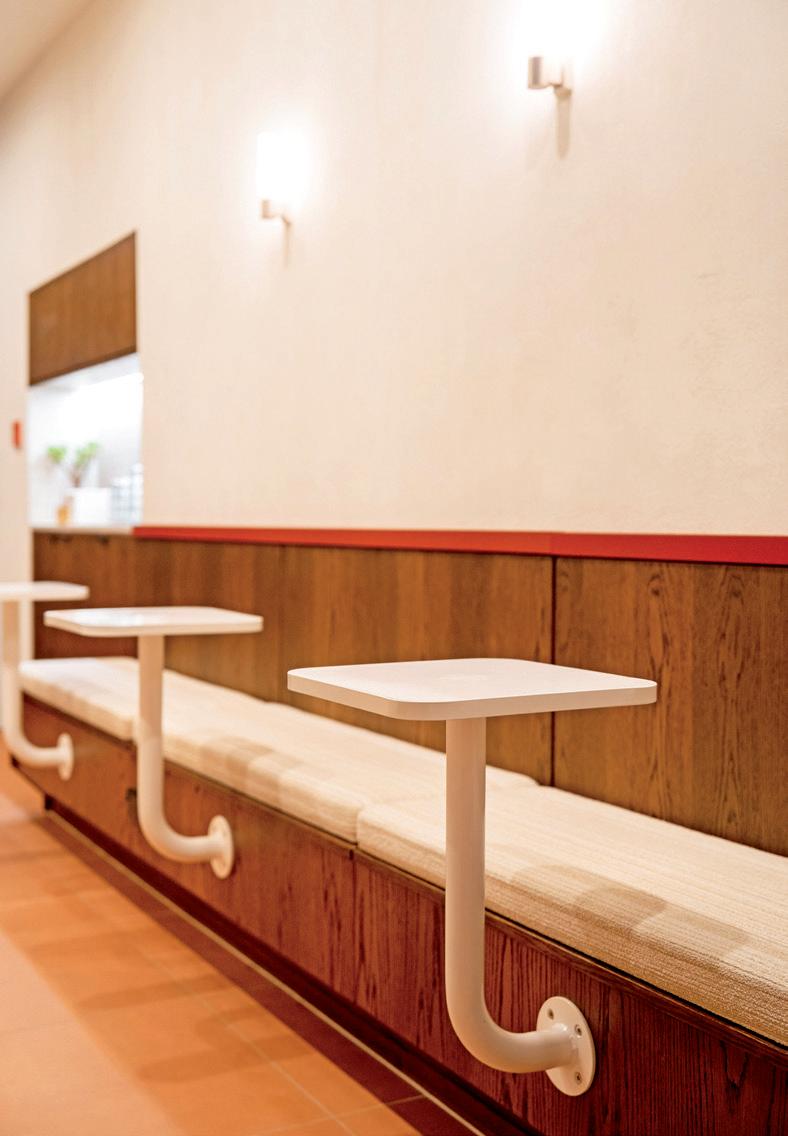
Gerrick Numan, Director of Millé, said at the start of any project, it is important to begin with the business model.
He said a beautiful space that doesn’t work operationally won’t survive. Part of the design will need to keep the focus of the flow of staff, customers and service in mind from day one, then layer aesthetics on top of that foundation. The most successful venue designs that Numan has been part of have been those where the design supports efficiency, speed and ease without compromising on atmosphere.
When it comes to applying a human-centric approach, Numan said hospitality is a people business, and it means everything.
“We think about how a person feels the moment they see the venue from the street, how they are drawn into the entrance. what they see when they walk in the door, making sure they know what to do and where to go, how the seating makes them feel, how they move through the space, and how staff operate around them,” said Numan.
“We ask what sort of people use this space, what seating do they want and need, what makes them feel welcome and comfortable? If you get the human experience right, you increase dwell time (if you want that), loyalty, and spend, and that’s what drives profitability.”
Numan believed that first impressions are emotional, and even before they order, customers decide how they feel about the establishment’s brand based on lighting, layout, smell, noise, comfort, music, spatial clarity, and what he described as 100 other unconscious things.
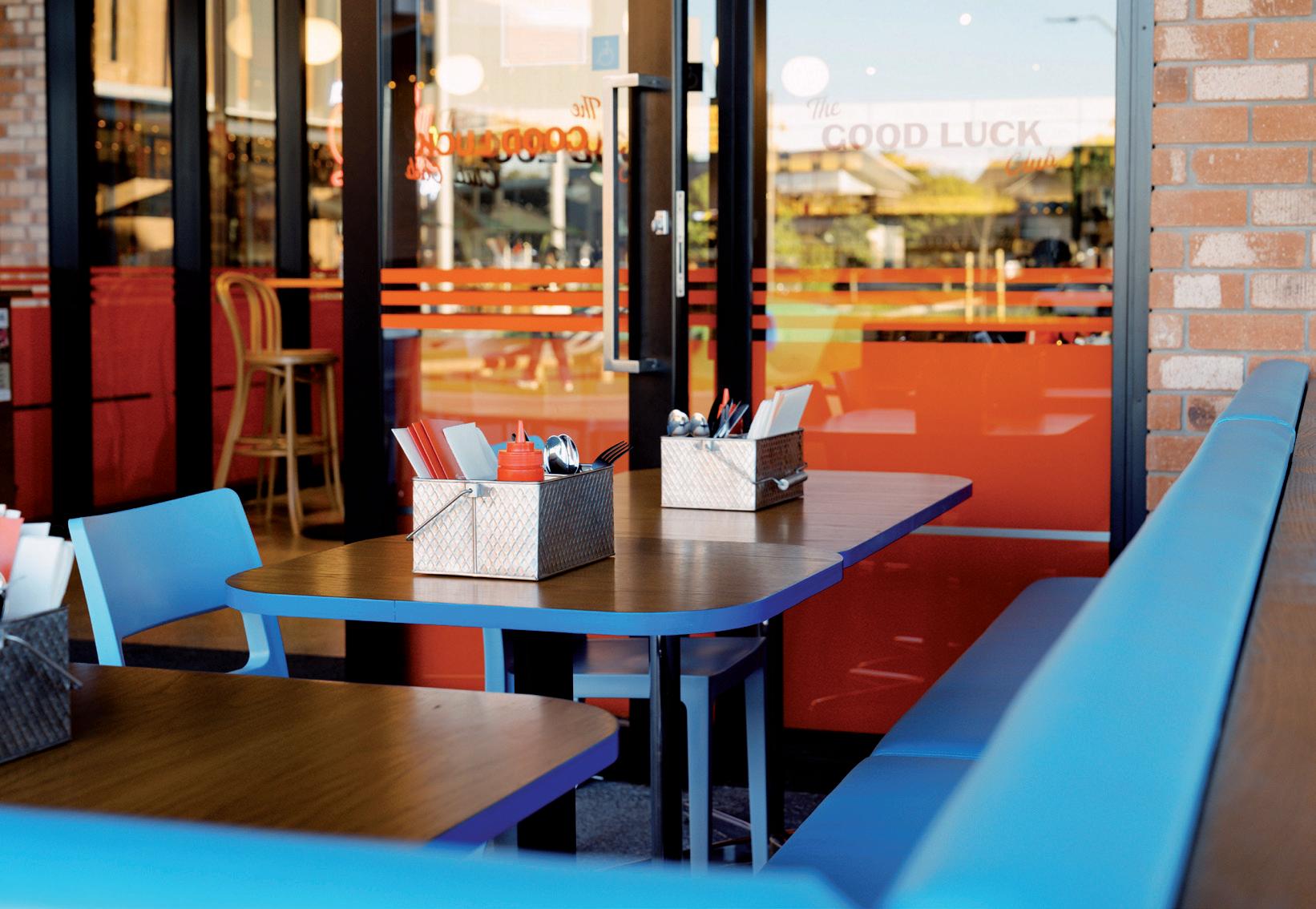









Continued from page 41.
Although it is important to create a strong sense of identity as soon as customers enter, usually through a clear focal point, confident signage and an atmosphere that feels deliberate, Numan said what makes customers return is a space that makes sense to the product and service, such as the layout, brand, or seating.
When designing, Numan prefers to keep things simple, such as clear and spatial planning, comfortable seating, and warm lighting.
“It affects mood, appetite, dwell time, even how good the food looks. We break lighting into zones, using different circuits and types of lights for flexibility, pendants for intimacy, track lighting for functionality and spot lighting and wall lights for warmth,” said Numan.
“We always use warm white light in customer zones and make sure everything is dimmable. That flexibility allows a venue to feel bright and energetic during the day and cosy and intimate at night.”
Strategic planning is important throughout the design process as fitouts are expensive. Every mistake costs money, not just to fix, but in lost time, lost revenue and stress. He said it’s not just about designing for today, it’s about designing for five years from now.
“We look at growth, workflow, staff movements, and how the venue can scale or shift over time. Strategic planning is what separates a beautiful space from a profitable business.”
In order for a design to be adaptable to all times of the day, it is important to consider how the space will transition. This could mean designing


IT AFFECTS MOOD, APPETITE, DWELL TIME, EVEN HOW GOOD THE FOOD LOOKS.

seating that will work for both solo coffee drinkers in the morning and large groups at night, or using lighting and music to signal a change in atmosphere.
Numan said that renovations and commercial fit-outs can be very wasteful industries, and that it is often more expensive to fix things than it would be to rip out and start from scratch. However, there are more and more materials with sustainable credentials.
“The most sustainable thing you can do (for your bank balance too) is to utilise an existing fit out, by simply altering the finishes, branding and perhaps furniture to establish a new identity. Renovating a venue will cost you 75 percent less than starting new.”



